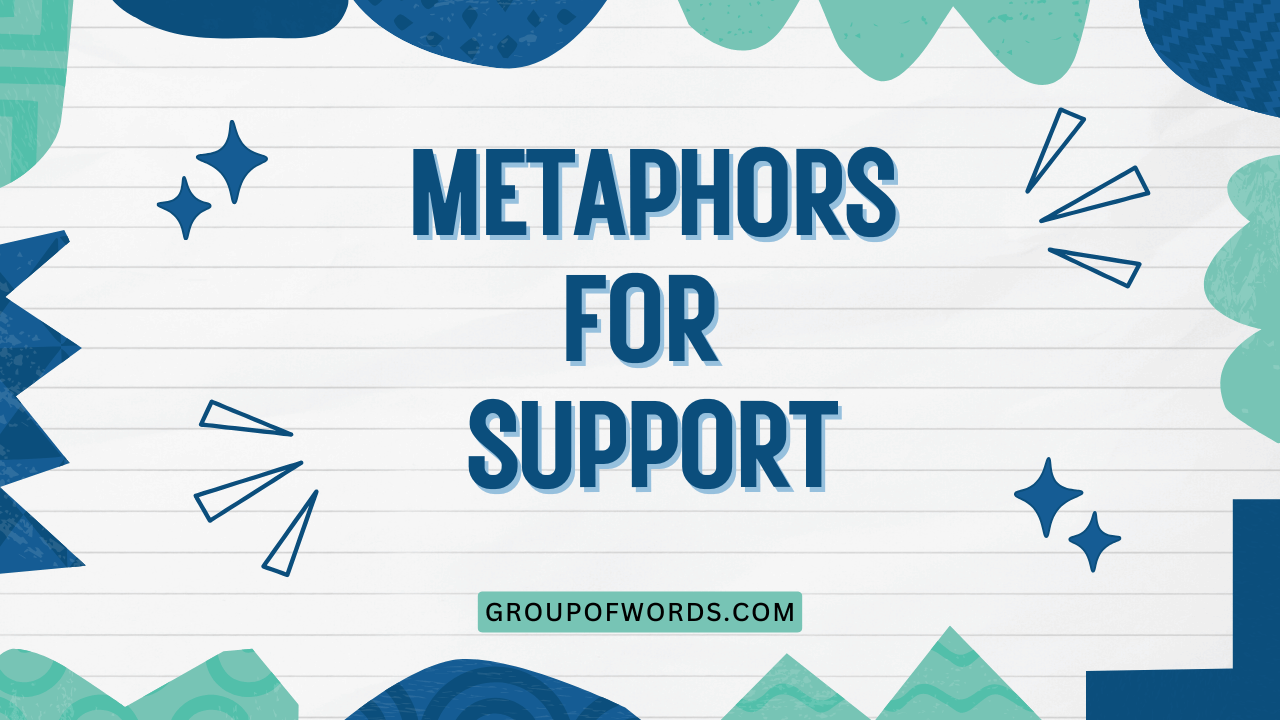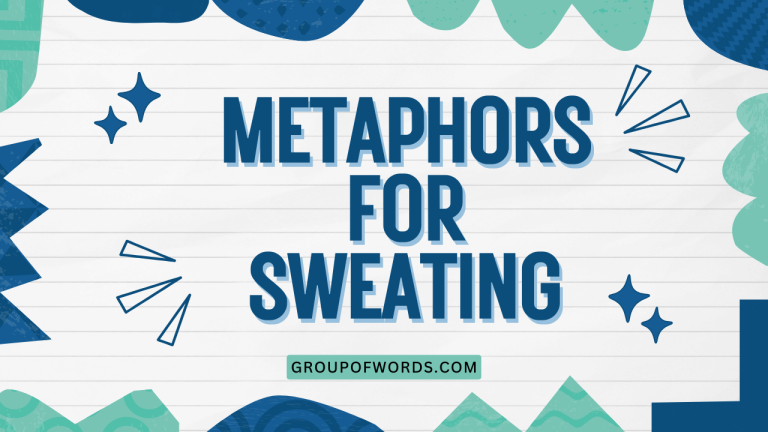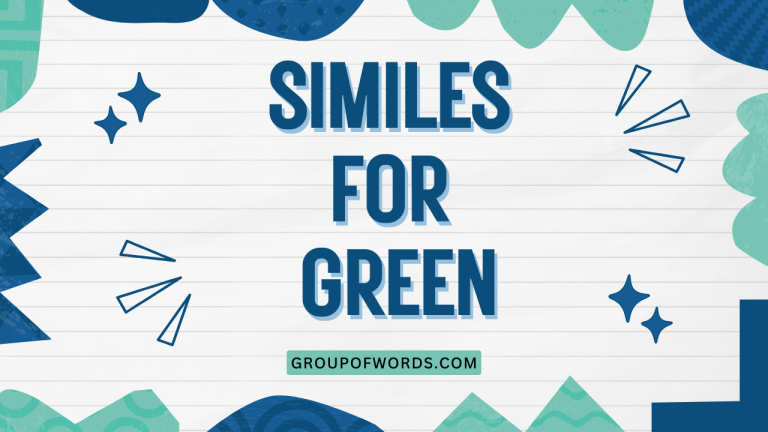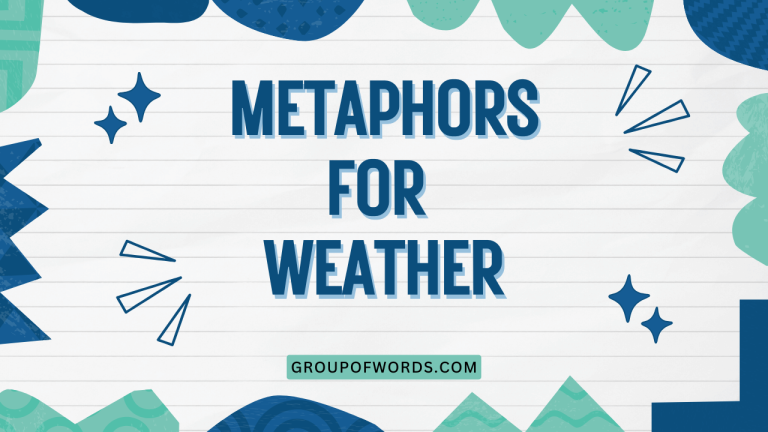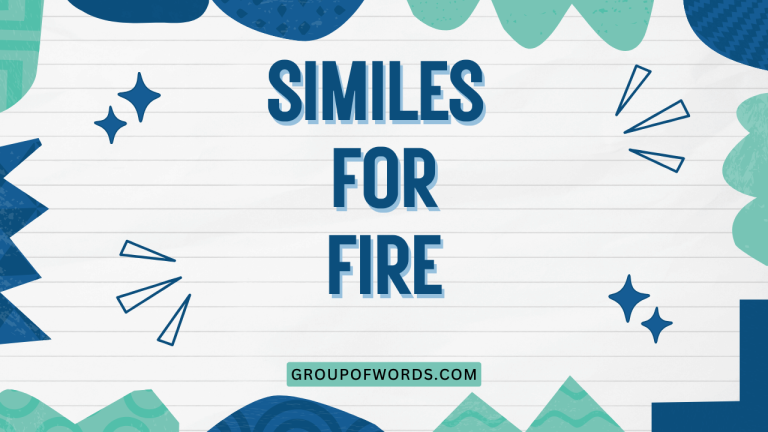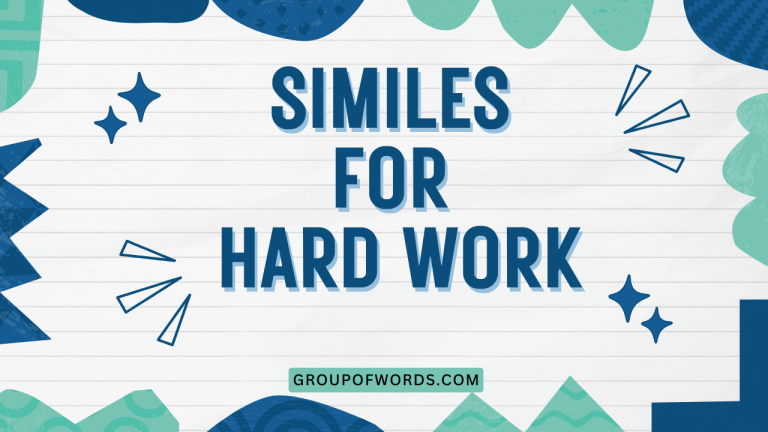Metaphors for Support: A Comprehensive Guide
Understanding metaphors is crucial for mastering English, as they add depth and color to our language. Metaphors for support, in particular, help us conceptualize abstract ideas like help, assistance, and encouragement in more tangible ways.
This article provides a comprehensive exploration of metaphors for support, outlining their various types, structural elements, and usage rules. This guide is beneficial for English language learners, writers, and anyone interested in enhancing their understanding and appreciation of figurative language.
Table of Contents
- Introduction
- Definition of Metaphors for Support
- Structural Breakdown
- Types of Metaphors for Support
- Examples of Metaphors for Support
- Usage Rules
- Common Mistakes
- Practice Exercises
- Advanced Topics
- FAQ
- Conclusion
Introduction
Metaphors are powerful tools in language, allowing us to understand abstract concepts by relating them to more concrete ones. The use of metaphors for “support” is particularly common, as it helps us visualize and comprehend the various ways in which we receive help, encouragement, and assistance.
By exploring these metaphors, we can gain a deeper appreciation for the nuances of the English language and improve our communication skills. This article aims to provide a comprehensive guide to metaphors for support, covering their definition, structure, types, usage rules, and common mistakes.
Whether you’re an English language learner, a writer looking to enhance your prose, or simply someone interested in the intricacies of language, this guide will offer valuable insights.
Definition of Metaphors for Support
A metaphor for support is a figure of speech that describes assistance, help, or encouragement by likening it to something that provides physical, emotional, or conceptual stability. Unlike similes, which use words like “like” or “as” to make comparisons, metaphors directly equate one thing to another, creating a more vivid and impactful image.
The function of a metaphor for support is to make an abstract idea more concrete and understandable. These metaphors can appear in various contexts, including everyday conversation, literature, and professional writing.
Classification: Metaphors for support fall under the broader category of conceptual metaphors, which are cognitive structures that shape how we think and talk about abstract concepts. Specifically, they often draw on the conceptual metaphor SUPPORT IS UP or HELP IS PHYSICAL ASSISTANCE.
Function: The primary function of these metaphors is to provide a tangible way of understanding the intangible concept of support. By comparing support to something concrete, such as a foundation or a crutch, we can more easily grasp its role and importance. Metaphors also add emotional resonance, making the concept of support feel more personal and meaningful.
Contexts: Metaphors for support are used in diverse contexts:
- Everyday conversation: “He’s been a rock for me.”
- Literature: “Her love was the bedrock upon which he rebuilt his life.”
- Business writing: “Our new software provides a strong platform for growth.”
- Political discourse: “The government is providing a safety net for struggling families.”
Structural Breakdown
Understanding the structure of metaphors for support involves recognizing the source domain (the concrete thing being used as a comparison) and the target domain (the abstract concept of support). The source domain provides the imagery, while the target domain is the concept being illuminated.
The link between the two is the metaphorical mapping, which establishes the connection between the characteristics of the source and the target.
Consider the metaphor “She is my pillar of strength.” The source domain is “pillar,” which is a physical structure that provides support. The target domain is “support,” specifically emotional and psychological strength.
The metaphorical mapping involves transferring the characteristics of a pillar (stability, reliability, unwavering presence) to the person being described. This mapping allows us to understand that the person provides unwavering emotional support and stability.
Another example is “The grant provided a lifeline for the struggling artist.” Here, the source domain is “lifeline,” a rope thrown to rescue someone in danger. The target domain is “financial support.” The metaphorical mapping connects the life-saving function of a lifeline to the crucial role of the grant in preventing the artist from failing.
This structure helps us understand the critical impact of the financial assistance.
Key Elements:
- Source Domain: The concrete concept used for comparison (e.g., pillar, foundation, crutch).
- Target Domain: The abstract concept of support (e.g., emotional support, financial support).
- Metaphorical Mapping: The connection between the source and target domains, highlighting shared characteristics.
Types of Metaphors for Support
Metaphors for support can be categorized based on the type of support they represent. The most common types include physical, emotional, financial, and intellectual support.
Each category uses distinct imagery to convey the specific nature of the support being described.
Physical Support Metaphors
These metaphors compare support to physical structures or objects that provide stability. Examples include “pillar,” “foundation,” “crutch,” “backbone,” and “scaffolding.” They emphasize the tangible and structural aspects of support.
Emotional Support Metaphors
Emotional support metaphors evoke feelings of comfort, reassurance, and encouragement. Examples include “shoulder to cry on,” “rock,” “anchor,” “safe harbor,” and “blanket of comfort.” These metaphors highlight the nurturing and stabilizing aspects of emotional support.
Financial Support Metaphors
These metaphors often relate financial assistance to life-sustaining resources or safety nets. Examples include “lifeline,” “safety net,” “financial cushion,” “bridge,” and “bailout.” They emphasize the critical role of financial support in preventing hardship or failure.
Intellectual Support Metaphors
Intellectual support metaphors describe guidance, knowledge, and mentorship. Examples include “guiding light,” “sounding board,” “springboard,” “building blocks,” and “intellectual foundation.” These metaphors highlight the role of intellectual support in fostering growth and understanding.
Examples of Metaphors for Support
The following tables provide a wide range of examples of metaphors for support, categorized by type to illustrate their diverse applications. Each example is designed to show how the metaphor is used in context and what kind of support it represents.
The table below illustrates examples of Physical Support Metaphors. These metaphors often use imagery related to buildings, structures, or objects that provide physical stability. The “Meaning” column explains the type of support being conveyed.
| Metaphor | Example Sentence | Meaning |
|---|---|---|
| Pillar of strength | He was a pillar of strength for his family during the crisis. | Provides unwavering support and stability. |
| Foundation | Education is the foundation for a successful career. | Provides a base for future growth. |
| Crutch | The government bailout was a crutch for the failing industry. | Temporary support during a period of weakness. |
| Backbone | Small businesses are the backbone of the economy. | Provides essential structural support. |
| Scaffolding | The teacher provided scaffolding to help students complete the project. | Temporary support to help someone reach a goal. |
| Anchor | Her faith was her anchor during difficult times. | Provides stability and prevents drifting. |
| Rope | They threw him a rope to help him out of the well. | Provides direct and immediate physical assistance. |
| Brace | The new policies served as a brace to the weakening economy. | Strengthens and stabilizes a vulnerable system. |
| Buttress | His unwavering optimism was a buttress against despair. | Provides extra support to prevent collapse. |
| Framework | The constitution provides the framework for the government. | Provides an underlying structure. |
| Underpinning | Research is the underpinning of all scientific progress. | Provides a fundamental basis. |
| Prop | The speaker used visual aids as a prop to his presentation. | Something that supports or sustains. |
| Beam | The new initiative is a beam of hope for the community. | A strong, supporting element. |
| Shield | His parents were a shield against the harsh realities of the world. | Protects from harm or difficulty. |
| Wall | The community built a wall of support around the grieving family. | A barrier providing protection and solidarity. |
| Platform | The university provides a platform for students to express their ideas. | A base or foundation for launching something. |
| Lever | Education is the lever that can lift people out of poverty. | A means of exerting influence or achieving a goal. |
| Ladder | Mentorship can be a ladder to success for young professionals. | A means of climbing or progressing. |
| Ramp | The new program serves as a ramp to higher education for underprivileged students. | A pathway to a higher level or goal. |
| Support system | Her friends and family formed a strong support system during her illness. | A network of people providing assistance and encouragement. |
| Girder | The new policy is a girder that strengthens the economic structure. | A main horizontal support of a structure. |
| Keystone | Honesty is the keystone of any successful relationship. | The central stone in an arch that holds it together. |
| Shore | The volunteers helped shore up the riverbank after the flood. | To support or strengthen something. |
| Stay | Regular exercise is a stay against declining health. | Something that provides support or restraint. |
| Trestle | The program provided a trestle to help the community rebuild. | A framework used for support. |
| Prop | Her optimism was a prop during difficult times. | Something that supports or sustains. |
| Reinforcement | The extra training provided reinforcement for the new skills. | The act of making something stronger. |
The table below showcases examples of Emotional Support Metaphors. These metaphors focus on the feelings of comfort, reassurance, and encouragement one receives from support. The “Meaning” column explains the type of emotional support being conveyed.
| Metaphor | Example Sentence | Meaning |
|---|---|---|
| Shoulder to cry on | She was always a shoulder to cry on when I was feeling down. | Provides comfort and empathy during distress. |
| Rock | He was my rock during the most challenging times. | Provides unwavering emotional stability and strength. |
| Anchor | Her love was my anchor in the storm. | Provides stability and prevents emotional drifting. |
| Safe harbor | Her friendship was a safe harbor in a turbulent world. | Provides a place of safety and refuge. |
| Blanket of comfort | His words were a blanket of comfort on a cold night. | Provides warmth, security, and reassurance. |
| Listening ear | She always offered a listening ear when I needed to talk. | Provides attentive and empathetic listening. |
| Ray of sunshine | Her smile was a ray of sunshine that brightened my day. | Provides happiness and positivity. |
| Guiding light | His wisdom was a guiding light in my life. | Provides guidance and direction. |
| Source of strength | Her determination was a source of strength for everyone around her. | Provides inspiration and resilience. |
| Comfort zone | Her presence was a comfort zone where I felt safe and secure. | Provides a sense of security and ease. |
| Guardian angel | She was his guardian angel, always watching over him. | Provides protection and care. |
| Wellspring of hope | His optimism was a wellspring of hope for the team. | Provides a constant source of optimism. |
| Fortress | Their home was a fortress of love and laughter. | Provides protection and security. |
| Balm | Her kind words were a balm to his wounded spirit. | Provides soothing and healing comfort. |
| Haven | The library was her haven from the stresses of daily life. | Provides a peaceful and safe environment. |
| Life raft | Friendship was a life raft during her isolation. | Provides rescue and support during a crisis. |
| Beacon | Her courage was a beacon for others facing similar challenges. | Provides guidance and hope. |
| Cheerleader | He was her biggest cheerleader, always encouraging her dreams. | Provides enthusiastic support and encouragement. |
| Consoler | She was the family’s consoler during times of grief. | Provides comfort and solace. |
| Encourager | He was a constant encourager, always believing in her potential. | Provides motivation and belief in one’s abilities. |
| Emotional buffer | She acted as an emotional buffer between her children and their problems. | Reduces the impact of emotional stress. |
| Emotional crutch | He became an emotional crutch, relied on excessively. | A source of support that can hinder independence if overused. |
| Safe space | The support group provided a safe space for sharing experiences. | A place where one can express themselves without fear of judgment. |
| Sounding board | He used his friend as a sounding board to work through his ideas. | Someone to discuss ideas with to gain clarity and perspective. |
| Warm embrace | Her words were a warm embrace, offering comfort and understanding. | A gesture or statement of comfort and affection. |
| Wingman | His friend acted as his wingman, providing support and encouragement. | Someone who supports and assists another person. |
The table below presents examples of Financial Support Metaphors. These metaphors typically depict financial assistance as a means of survival, stability, or growth. The “Meaning” column explains the type of financial support being conveyed.
| Metaphor | Example Sentence | Meaning |
|---|---|---|
| Lifeline | The emergency loan was a lifeline for the struggling business. | Provides critical financial assistance to prevent failure. |
| Safety net | Social security provides a safety net for retirees. | Provides basic financial security during hardship. |
| Financial cushion | Having a savings account provides a financial cushion in case of emergencies. | Provides a buffer against unexpected expenses. |
| Bridge | The grant served as a bridge to help the company transition to new markets. | Provides temporary financial support to overcome a gap. |
| Bailout | The government provided a bailout to the failing bank. | Provides financial rescue to prevent collapse. |
| Seed money | The venture capitalists provided the seed money for the startup. | Provides initial funding to start a business. |
| Financial backing | The project received strong financial backing from investors. | Provides substantial financial support. |
| Financial foundation | The inheritance provided a financial foundation for his family. | Provides a stable base for future financial security. |
| Economic stimulus | The tax cuts were designed to provide an economic stimulus. | Provides financial incentives to boost economic activity. |
| Grants | The university received several grants to fund research projects. | Provides funding for specific purposes. |
| Subsidies | Farmers receive government subsidies to support agricultural production. | Provides financial assistance to reduce costs. |
| Investment | The company made a significant investment in new technology. | Provides funding with the expectation of future returns. |
| Capital injection | The company received a capital injection to expand its operations. | Provides a large sum of money for growth. |
| Financial lifeline | The aid package was a financial lifeline for the disaster-stricken region. | Provides emergency funding to prevent further devastation. |
| Buffer | The reserve fund acted as a buffer against economic downturns. | Provides protection against financial shocks. |
| Financial springboard | The loan served as a financial springboard to launch his career. | Provides the initial boost for success. |
| Financial scaffold | The program provided a financial scaffold to help families rebuild their homes. | Provides temporary support for rebuilding. |
| Financial safety harness | The insurance policy acted as a financial safety harness in case of accidents. | Provides protection against financial risks. |
| Financial umbrella | The government’s policies provided a financial umbrella during the recession. | Provides broad protection against financial hardship. |
| Financial backbone | The small business loan was the financial backbone he needed to start. | Supplies key support for a business. |
| Capital flow | The increase in capital flow to the region boosted the local economy. | The movement of money into a particular area. |
| Dough | The investors provided the dough needed to launch the new product. | Informal term for money. |
| Funding stream | The charity relied on a steady funding stream from donors. | A consistent source of financial support. |
| Money tree | He wished he had a money tree to solve all his financial problems. | A source of unlimited money (often used sarcastically). |
| Nest egg | She had been saving her whole life to build a comfortable nest egg for retirement. | Savings accumulated for the future. |
| Piggy bank | The small business started with just a piggy bank and a dream. | A small amount of savings. |
Below is a table featuring Intellectual Support Metaphors. These metaphors focus on the provision of knowledge, guidance, and mentorship. The “Meaning” column explains the nature of the intellectual support being conveyed.
| Metaphor | Example Sentence | Meaning |
|---|---|---|
| Guiding light | His professor was a guiding light throughout his academic journey. | Provides direction and insight. |
| Sounding board | She used her mentor as a sounding board to refine her ideas. | Provides a trusted source for feedback and discussion. |
| Springboard | The research grant served as a springboard for her scientific career. | Provides the initial boost for advancement. |
| Building blocks | Basic math skills are the building blocks for advanced calculus. | Provides fundamental knowledge for further learning. |
| Intellectual foundation | A strong liberal arts education provides an intellectual foundation for critical thinking. | Provides a robust base for intellectual development. |
| Mentor | She was a mentor to many young entrepreneurs. | Provides guidance, advice, and support. |
| Teacher | Experience is the best teacher. | Provides knowledge and lessons. |
| Coach | The debate coach helped her hone her arguments. | Provides training and guidance. |
| Advisor | Her academic advisor helped her choose the right courses. | Provides advice and support. |
| Guru | He was considered a guru in the field of artificial intelligence. | Provides expert knowledge and guidance. |
| Source of knowledge | The library is a source of knowledge for the community. | Provides access to information and learning resources. |
| Fountain of wisdom | The elder was considered a fountain of wisdom by the villagers. | Provides deep and insightful knowledge. |
| Enlightener | The philosopher was an enlightener who challenged conventional thinking. | Provides new perspectives and understanding. |
| Guide | The research paper served as a guide for future studies. | Provides direction and instruction. |
| Tutor | He hired a tutor to help him with his math homework. | Provides personalized instruction and support. |
| Intellectual crutch | Relying too much on others can turn them into an intellectual crutch. | A form of support that can hinder independent thought. |
| Intellectual sparring partner | They engaged in lively debates, acting as intellectual sparring partners. | Someone who challenges and stimulates intellectual growth. |
| Philosophical anchor | Her beliefs were a philosophical anchor during times of uncertainty. | A belief system that provides stability and direction. |
| Intellectual compass | His curiosity served as an intellectual compass, guiding his explorations. | A drive that directs intellectual pursuits. |
| Educational ladder | Each degree was a rung on the educational ladder, leading to success. | Steps to achieve higher education. |
| Inspiration | Great leaders are sources of inspiration for their followers. | Provides a spark for creativity and motivation. |
| Key | Education is the key to unlocking a better future. | Provides access to opportunities. |
| Lens | History provides a lens through which we can understand the present. | Offers a perspective for viewing the world. |
| Map | The textbook served as a map to guide them through the course. | Provides a clear path to understanding. |
| Tool | Critical thinking is a valuable tool for problem-solving. | Provides a means to achieve a specific outcome. |
Usage Rules
Using metaphors for support effectively requires attention to context, clarity, and appropriateness. The metaphor should resonate with the audience and accurately convey the intended meaning.
Avoid mixed metaphors and clichés, which can weaken the impact of your writing.
Context: The context in which you use a metaphor is crucial. Consider the audience, the subject matter, and the overall tone of your writing. A metaphor that works well in one situation may be inappropriate in another.
Clarity: A good metaphor should be clear and easy to understand. If the connection between the source and target domains is too obscure, the metaphor will fail to communicate effectively. Make sure the imagery is accessible to your audience.
Appropriateness: Choose metaphors that are appropriate for the subject matter. Avoid using overly dramatic or exaggerated metaphors for trivial matters. Similarly, avoid using insensitive or offensive metaphors when discussing sensitive topics.
Avoid Mixed Metaphors: Mixed metaphors occur when you combine two or more metaphors that create a confusing or contradictory image. For example, “We need to nip this problem in the bud before it snowballs out of control” combines two different images (nipping a bud and a snowball rolling downhill), resulting in a nonsensical statement.
Avoid Clichés: Clichés are overused metaphors that have lost their impact. Examples include “pillar of strength” and “shoulder to cry on.” While these metaphors are still understandable, they lack originality and can make your writing sound uninspired. Try to find fresh and creative ways to express the concept of support.
Common Mistakes
Several common mistakes can undermine the effectiveness of metaphors for support. These include using mixed metaphors, employing clichés, and failing to ensure clarity.
Recognizing these errors can help you avoid them in your own writing.
Mixed Metaphor: Combining unrelated images can confuse the reader and weaken your message.
Incorrect: “Let’s grab the bull by the horns and swim upstream.” (combines wrestling a bull and swimming, which don’t logically connect.)
Correct: “Let’s grab the bull by the horns and tackle this challenge head-on.”
Cliché: Overusing familiar metaphors can make your writing sound unoriginal and uninspired.
Incorrect: “He was a pillar of strength for his family.”
Correct: “He provided unwavering stability and support for his family, like a sturdy oak tree weathering a storm.”
Lack of Clarity: If the connection between the source and target domains is unclear, the metaphor will fail to communicate effectively.
Incorrect: “The quantum entanglement provided a support system.” (The connection between quantum entanglement and support is unclear without further explanation.)
Correct: “The network of volunteers provided a strong support system for the community, connecting people in need with those who could help, just as quantum entanglement links particles across vast distances.”
Inappropriate Tone: Using a metaphor that is too casual for a formal situation or vice versa can detract from your message.
Incorrect: (In a formal business report) “The new investment was a real shot in the arm for the company.”
Correct: (In a formal business report) “The new investment provided a significant boost to the company’s growth prospects.”
Practice Exercises
These exercises will help you practice identifying and using metaphors for support. Each exercise focuses on a different aspect of metaphor usage, from recognizing existing metaphors to creating your own.
Exercise 1: Identifying Metaphors
Identify the metaphors for support in the following sentences:
| Question | Answer |
|---|---|
| 1. Her encouragement was a ray of sunshine on a cloudy day. | ray of sunshine |
| 2. Education is the foundation for a successful future. | foundation |
| 3. His advice was a guiding light in my career. | guiding light |
| 4. The loan was a lifeline for the struggling business. | lifeline |
| 5. She was a rock for me during the crisis. | rock |
| 6. The grant served as a bridge to help the company expand. | bridge |
| 7. The community provided a safety net for those in need. | safety net |
| 8. Her friendship was an anchor in the storm. | anchor |
| 9. His mentorship was a springboard for my success. | springboard |
| 10. She offered a shoulder to cry on when I was feeling down. | shoulder to cry on |
Exercise 2: Completing Metaphors
Complete the following sentences with an appropriate metaphor for support:
| Question | Answer |
|---|---|
| 1. His kindness was like a _________, offering comfort and warmth. | blanket |
| 2. The new policy served as a _________ for the weakening economy. | brace |
| 3. Education is the _________ that can lift people out of poverty. | lever |
| 4. Her love was the _________ upon which he rebuilt his life. | bedrock |
| 5. The program provided a _________ to help the community rebuild after the disaster. | trestle |
| 6. The volunteers helped _________ up the riverbank after the flood. | shore |
| 7. The extra training provided _________ for the new skills. | reinforcement |
| 8. The university provides a _________ for students to express their ideas. | platform |
| 9. The research is the _________ of all scientific progress. | underpinning |
| 10. The new initiative is a _________ of hope for the community. | beam |
Exercise 3: Creating Your Own Metaphors
Create your own metaphors for support based on the following prompts:
| Question | Answer |
|---|---|
| 1. Describe financial support for a small business. | The loan was the wind beneath the fledgling business’s wings, allowing it to soar. |
| 2. Describe emotional support for someone grieving. | Her presence was a gentle rain on parched earth, soothing his grief-stricken soul. |
| 3. Describe intellectual support from a mentor. | His mentor’s guidance was a compass, steering him through the fog of uncertainty. |
| 4. Describe physical support for someone recovering from an injury. | The physical therapy was a bridge, helping him cross the chasm between injury and recovery. |
| 5. Describe the support a community provides during a crisis. | The community became a fortress, protecting its members from the
onslaught of hardship. |
Advanced Topics
Exploring advanced topics in metaphors for support involves examining how these metaphors can be used in persuasive writing, political discourse, and literary analysis. Understanding the subtle nuances of these metaphors can enhance your ability to communicate effectively and interpret complex texts.
Persuasive Writing: In persuasive writing, metaphors for support can be used to evoke emotional responses and build rapport with the audience. By framing an argument in terms of support, you can make it more relatable and compelling. For example, a politician might describe a proposed policy as a “lifeline” for struggling families to garner support for the initiative.
Political Discourse: Metaphors for support are frequently used in political discourse to shape public opinion. Politicians often use metaphors like “safety net” to describe social welfare programs, framing them as essential protections for vulnerable populations. The choice of metaphor can significantly influence how the public perceives these policies.
Literary Analysis: In literary analysis, metaphors for support can provide valuable insights into the themes and characters of a text. Analyzing the metaphors used by an author can reveal underlying attitudes and beliefs. For example, if a character describes their friend as a “rock,” it suggests that they view the friend as a source of stability and strength.
Subtleties in Interpretation: The interpretation of metaphors can be subjective and influenced by cultural context. A metaphor that resonates with one audience may not have the same impact on another. Therefore, it’s essential to consider the cultural and historical context when analyzing metaphors.
Nuances in Cross-Cultural Communication: Metaphors for support can vary significantly across cultures. What is considered a strong and positive metaphor in one culture may be viewed negatively in another. Being aware of these differences can help you avoid misunderstandings and communicate more effectively in cross-cultural settings. For example, a metaphor that relies on a specific cultural reference may not be easily understood by someone from a different background.
FAQ
What is the difference between a metaphor and a simile?
A metaphor directly equates two things, while a simile uses “like” or “as” to make a comparison. For example, “He is a rock” (metaphor) versus “He is like a rock” (simile).
How can I avoid using clichés in my writing?
Try to find fresh and original ways to express your ideas. Instead of relying on overused metaphors, think about the specific qualities of the support you’re describing and create your own unique imagery.
What should I do if I accidentally use a mixed metaphor?
Revise your sentence to create a more coherent image. Identify the conflicting elements and choose a single metaphor that accurately conveys your intended meaning.
Are metaphors for support universal across all cultures?
No, metaphors can vary significantly across cultures. What is considered a strong and positive metaphor in one culture may not have the same impact in another.
Always consider the cultural context when using metaphors.
How can I improve my understanding of metaphors for support?
Read widely and pay attention to the metaphors used by different authors and speakers. Practice identifying and analyzing metaphors in various contexts, and experiment with creating your own.
Conclusion
Metaphors for support are powerful tools for understanding and communicating the abstract concept of assistance. By recognizing the different types of support metaphors, understanding their structural elements, and following usage rules, you can enhance your writing and speaking skills.
Avoiding common mistakes like mixed metaphors and clichés will further refine your ability to use these metaphors effectively. Whether you’re an English language learner, a writer, or simply someone interested in the intricacies of language, mastering metaphors for support will enrich your understanding and appreciation of the English language.
